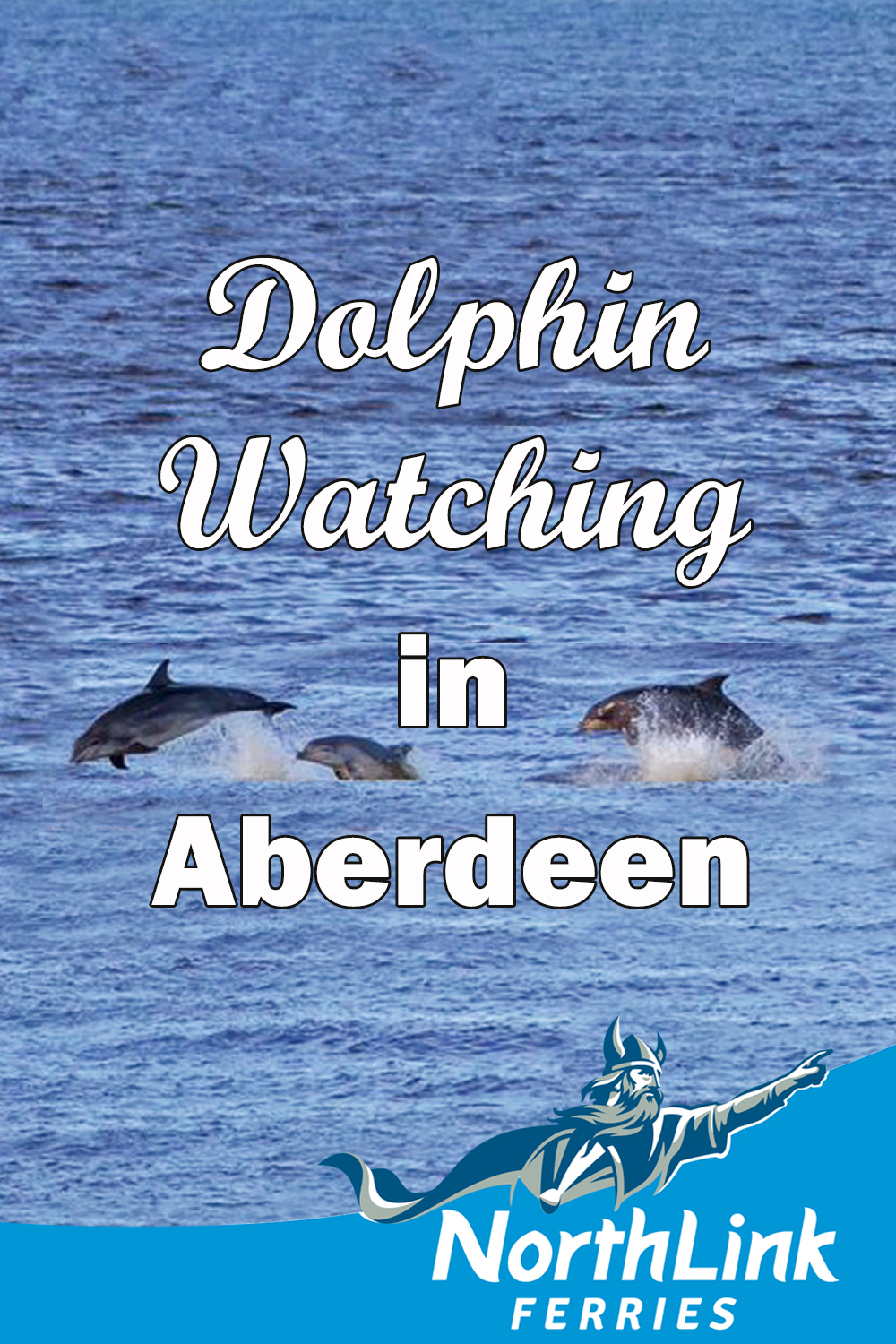Dolphin Watching in Aberdeen
Scotland’s Northern Isles are renowned for being among the greatest locations in Europe for watching wildlife. But did you know that Aberdeen is one of the best places in the UK for dolphin watching?
The dolphins found in the northeast of Scotland are some of the biggest in the world, growing up to 4.5 metres long!
Torry Battery in Aberdeen is repeatedly recorded as one of the best places to spot bottlenose dolphins from land in Britain! The site boasts stunning panoramic views of the Harbour mouth and the North Sea, and dolphins can be spotted more often than not playing and splashing in the water.
To learn more about the dolphins in this area, we were delighted to speak with Ian Hay, the Marine Scotland Project Manager from the East Grampian Coastal Partnership.
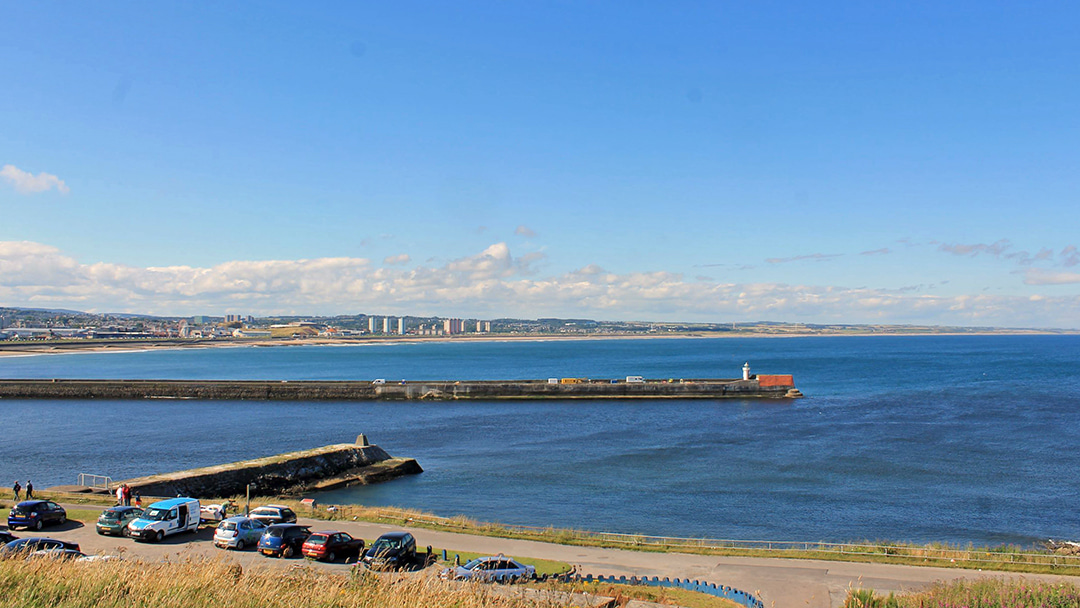
Q. Why is Aberdeen Harbour a popular place for dolphins to be?
A. The entrance to the river Dee is through a narrow passage in Aberdeen Harbour. For dolphins, this is an excellent place for them to hunt as the fish are concentrated into a small area. Additionally, compared to smaller fast-moving ships, the Harbour has more larger boats which are less disruptive to the dolphins. Bigger boats aren’t as much of a disturbance as they travel in predictable straight lines and can even be used to aid dolphins in their hunting.
Q. How many dolphins are there in total and are they a family?
A. In the Northeast, it is estimated that there is a population of about 200 dolphins. There are family groups among them, and we frequently see the same alliances and pods working together. When you spot them out on a boat, often the males will swim in-between the boat and their family as they act as a scout and protector.
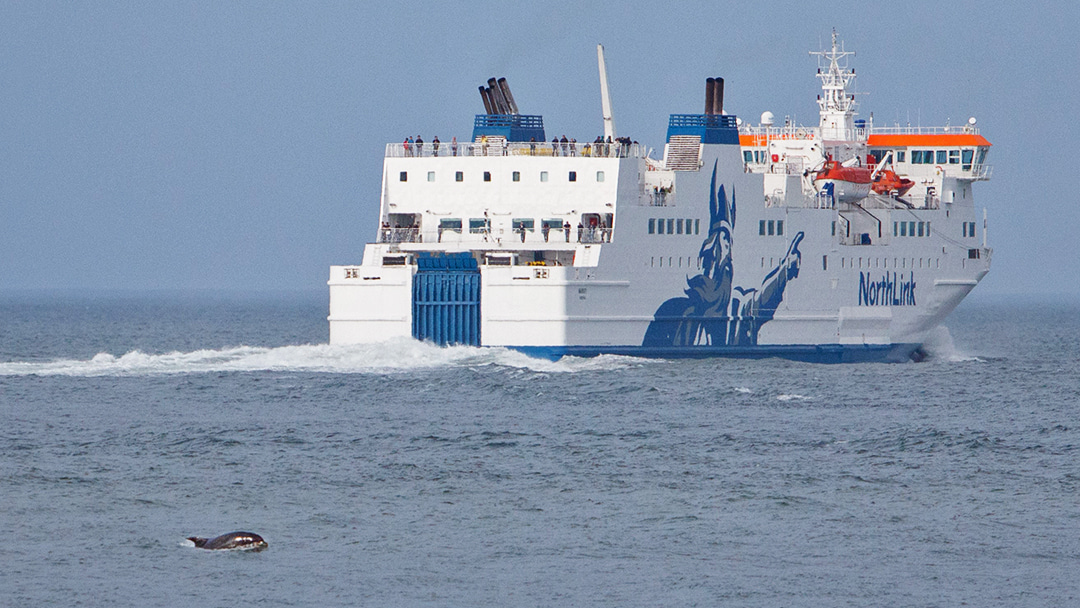
Q. How old to the dolphins live for?
A. On average, dolphins can live anywhere between 40 and 50 years old, with the females generally outliving the males. We have photographic records of dolphins that are still seen at the Harbour today that were pictured in the 1990s. We take photos of the dolphin’s dorsal fins to identify them through scratches or marks – it is like their own unique fingerprint.
Q. How intelligent are the dolphins?
A. Dolphins are extremely intelligent. Each pod or species will have their own culture and unique ways of doing things. For instance, some dolphins hunt poisonous spiney fish having first gathered sea sponges which they use to protect their noses. There was even an index created which compares the brain versus the body size of various animals. The results of the study show that dolphins are second only to humans, making them one of the most intelligent animals in the world.
Q. What size are the dolphins?
A. The dolphins along the Northeast of Scotland are among the biggest in the world. They can grow up to 4.5 metres in size and are specially adapted to live in the cold waters here.
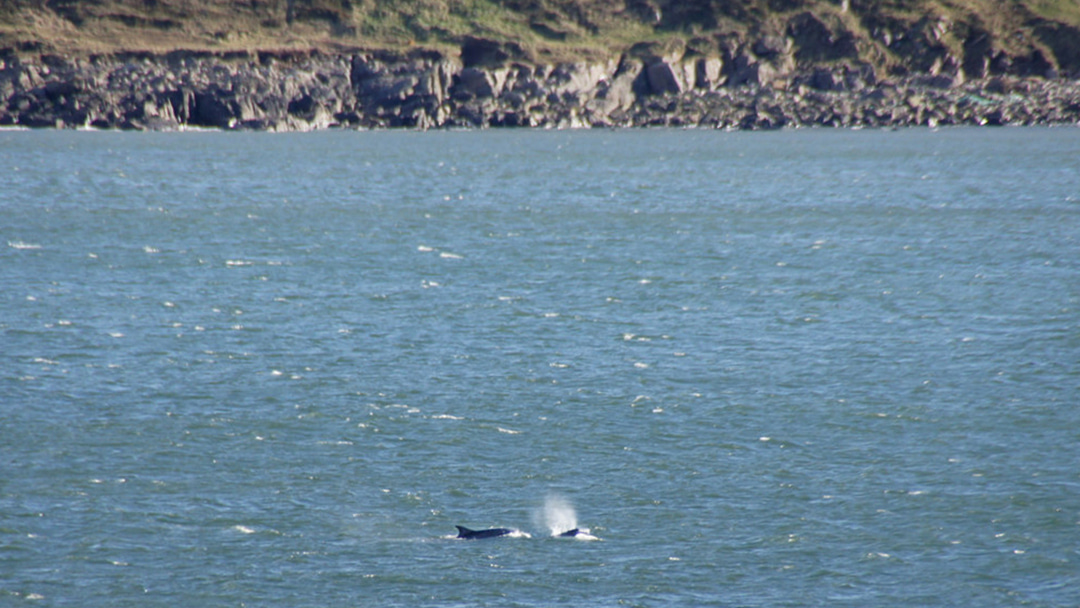
Q. Can you view the dolphins at the Harbour at any time of the year?
A. There are high and low periods. The best time of the year to increase your chances of seeing the dolphins are from January until June. During this period they tend to feed near the surface and their numbers are at their peak. You will often catch them leaping and splashing in the sea. They become more difficult to spot in the second half of the year, as their numbers decline, and they start to feed deeper – only rising to the surface to breathe.
Q. Are there any other good locations near Aberdeen where you can spot Dolphins?
A. Yes, the east coast has many beautiful spots, but Aberdeen Harbour is the easiest and most reliable place to catch a glimpse of the dolphins. Throughout the summer months on board the NorthLink Ferry, passengers should keep an eye out for harbour porpoise, minke whale, white-beaked dolphins and risso dolphins as the ship leaves Aberdeen. A pod of orcas have previously spent a couple of months near Fraserburgh and Peterhead, while humpback whales have been known to occasionally settle in coastal bays. The more time you spend looking, the better your chances of finding them are.
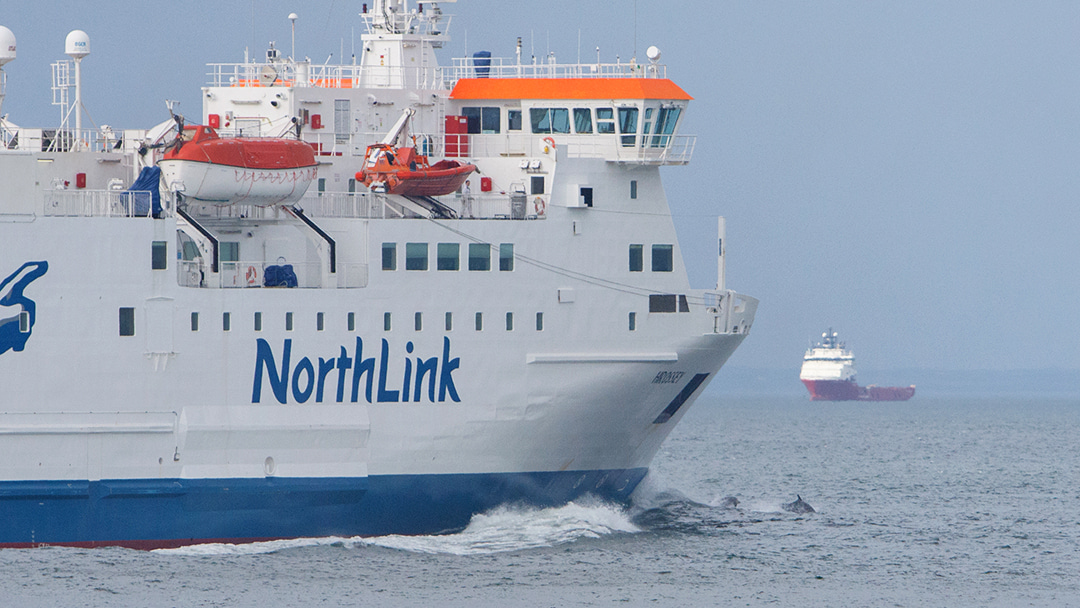
Q. Does the passing shipping traffic cause harm to the dolphins?
A. No. The larger the boat the less of a problem they are to the dolphins. To a dolphin, a large boat is like a vintage steam roller to us – they are loud, slow and stay on a steady course. White-beaked and bottlenose dolphins particularly seek out larger boats and appear to have a fantastic time riding the waves at the front of the ships. A problem arises with the small, fast-moving boats and untrained people who have a more aggressive approach when trying to get close to the dolphins.
Q. Do you have any advice for spotting dolphins either on land or at sea?
A. The best thing to do is get used to the behaviours of the dolphins at Aberdeen Harbour. Once you have done this for a while, going out on a boat is a great way to spot them when you know what to look for. One key point is the flatter the sea, the easier it is to find them. Groups of birds feeding or hovering above the water is another sign to look out for as it often suggests that there is something beneath the surface. Additionally, leads – lines in the sea brought on by tides and currents – are a great place to search. There are also known hot-spots where groups of dolphins are known to hunt, such as at Aberdeen Harbour.
Q. Can you tell us about any interesting behaviours of the dolphins?
A. The dolphins at Aberdeen Harbour certainly show interesting behaviours – one of which being the ways that they work together to hunt as a group. In the past, we have observed the adults hunting in the Harbour whilst the females and young dolphins stay close to the Harbour’s control tower. The adults would conduct the hunt, and after that, they would all quickly come together and leap and jump out of the water. It’s so interesting to observe them and pick up on their little quirks.
 By Amy Leith
By Amy LeithBorn and raised in Aberdeen with an admiration for Orkney and Shetland, loves to travel and visit new places, enjoys cooking, always listening to music, spends a little too much time on TikTok.
Pin it!
